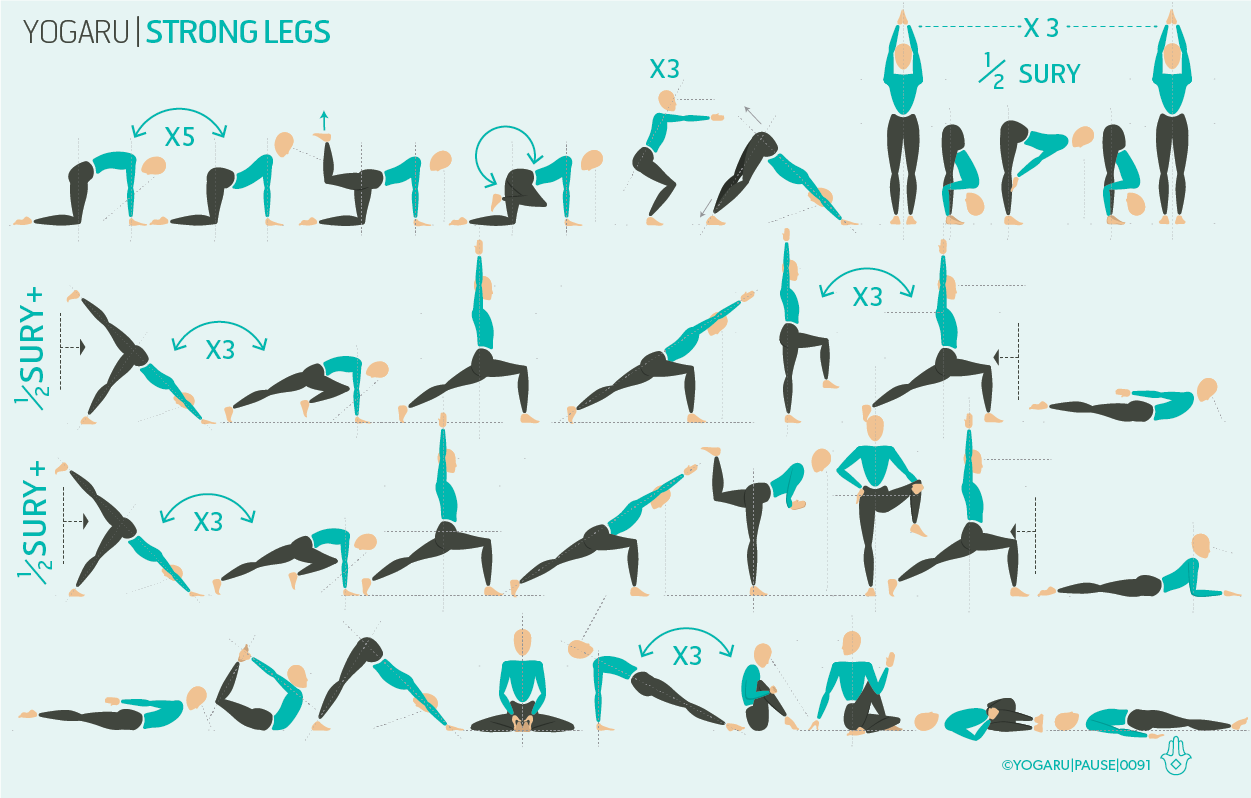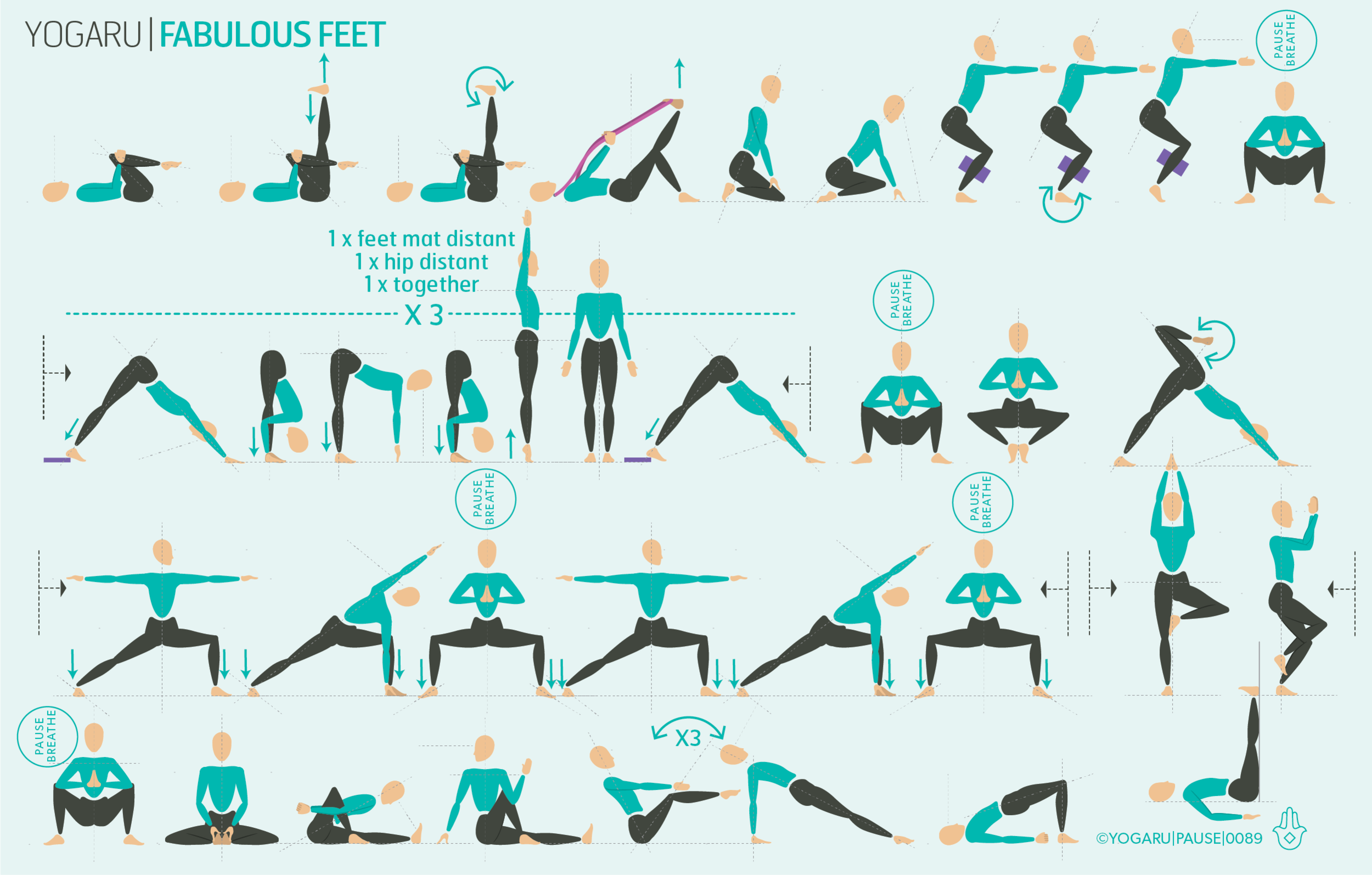SLOW MO
Stability is considered to come from the core, but the legs are also working very hard to stabilise your movement while standing, walking and running. Conscious movement through transitions give the opportunity to add depth to our yoga practice. When we move slowly from pose to pose we recruit all the strong stabilising muscles of the body. Take the simple step forward from Ashta Chandrasana/Eight Crescent Moon to Tadasana/Mountain at the top of the mat – you can use momentum to lift and swing your leg forward, this is a cardiovascular output, or you can press strongly into your front leg, lift the back leg up and gradually draw it forward to the top of the mat as slow as you possibly can – this is a strong muscular output.
CULTIVATING STRONG LEGS
When it comes to strong legs in your practice look to build from the ground up. Press into the three points of contact with the ground – the big toe mound, the little toe mound and the centre of the back of your heel. Feel the arches of your feet lift, and the energy travel up your legs, as the muscles react to this simple action of grounding down. When the legs are strong, supportive and reactive in our everyday movement, the upper body becomes more fluid and holds less tension.
EXPLORING STRONG LEGS IN YOUR PRACTICE
As you move through this sequence concentrate your attention on the quality of your movement from pose to pose. Feel for the stabilising muscles around your joints and how the body is constantly correcting it’s balance with proprioception. See can you isolate the sensations in the muscles of the legs as you move slowly through the ‘step back’ flow. Take your time and don’t rush. You might even find that you don’t get through the full range of standing mini slow flows in one practice. If so, come back to it at your next practice, start with the warm up section and explore the next mini slow flow.
ALIGNMENT CUES
You will flow through the peak pose of Ashta Chandrasana/Eight Crescent Moon several times as you work through this sequence. This pose is a opportunity to strengthen and stretch all the muscles on of the legs in the alternate sides. In the front leg the hamstrings and glutes are being stretched, and the quads and hip flexors are being strengthened; while the hamstrings and glutes are being strengthened, and the quads and hip flexors and being stretched in the back leg. The alignment cues below will guide you through your optimal alignment for Ashta Chandrasana/Eight Crescent Moon and how to approach the first mini slow flow.
From Adho Mukha Svanasana/Downward Dog, inhale, step your right foot between your hands, exhale here.
Inhale, press into your feet to come up, place your hands on your pointy hip bones and lift them up to stack the pelvis.
Press out through your left heel, lift your thigh up and firm your back leg. Squeeze the glute of your left leg to strengthen the hamstring and open the left hip flexor. Hug your outer hips strongly to the midline for balance.
Reach your arms up high, shoulder width apart or palms together. Stack your front knee over your front ankle. Press strongly into your right foot and feel the quad working hard to keep you balanced.
Draw your navel towards your spine, broaden through your collarbones, lengthen through your spine to the tip of your crown, gaze forward or to your fingertips.
Exhale, lean your weight forward over your front foot. Inhale, slowly lift your left leg and draw it forward to Urdhva Hastasana/Upward Salute with a lifted leg. Pause.
Bend your front knee and on an exhale slow as you can step back to Ashta Chandrasana/Eight Crescent Moon. Repeat three times.
To save the images for personal use click and hold down the image until the ‘save image’ option appears; on Mac hold down ‘control’ and click the image to get the option box; on PC right click on the image to get the option box. Scroll down in the ‘option box’ and click ‘save image’.
Ruth Delahunty Yogaru




